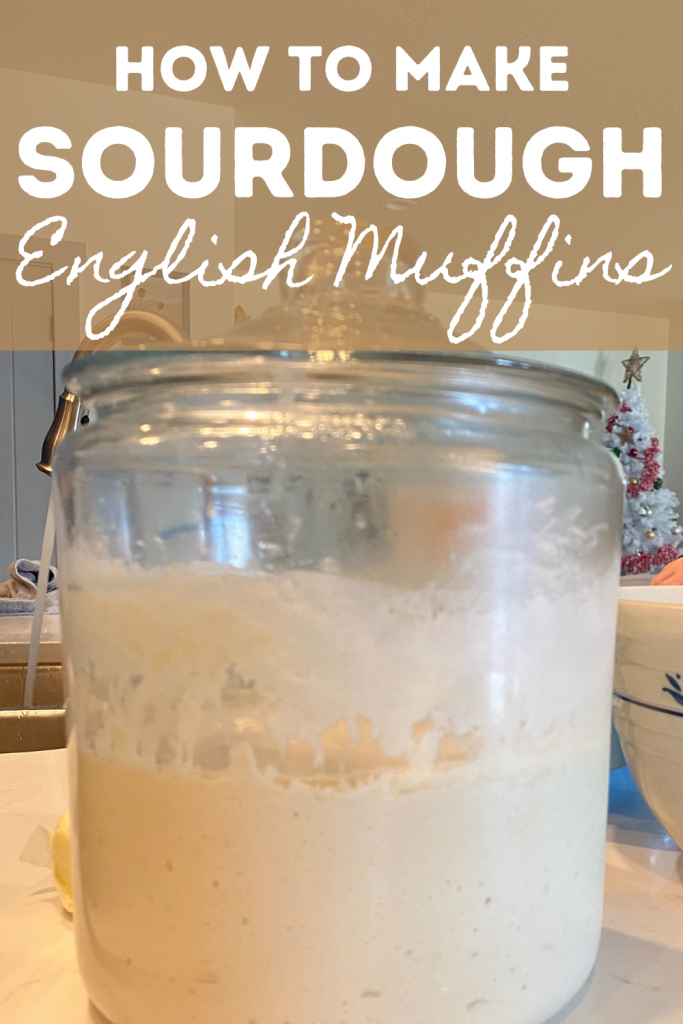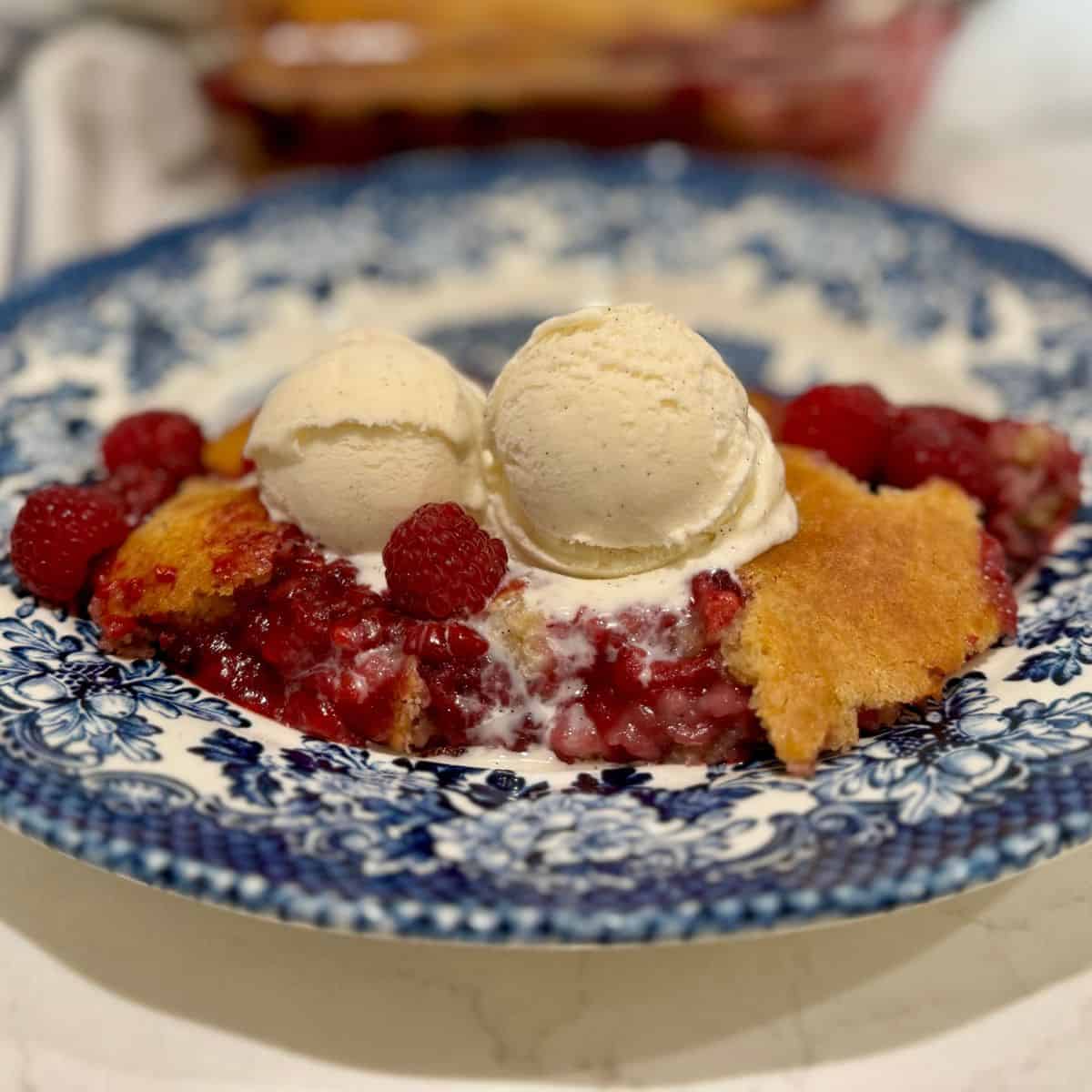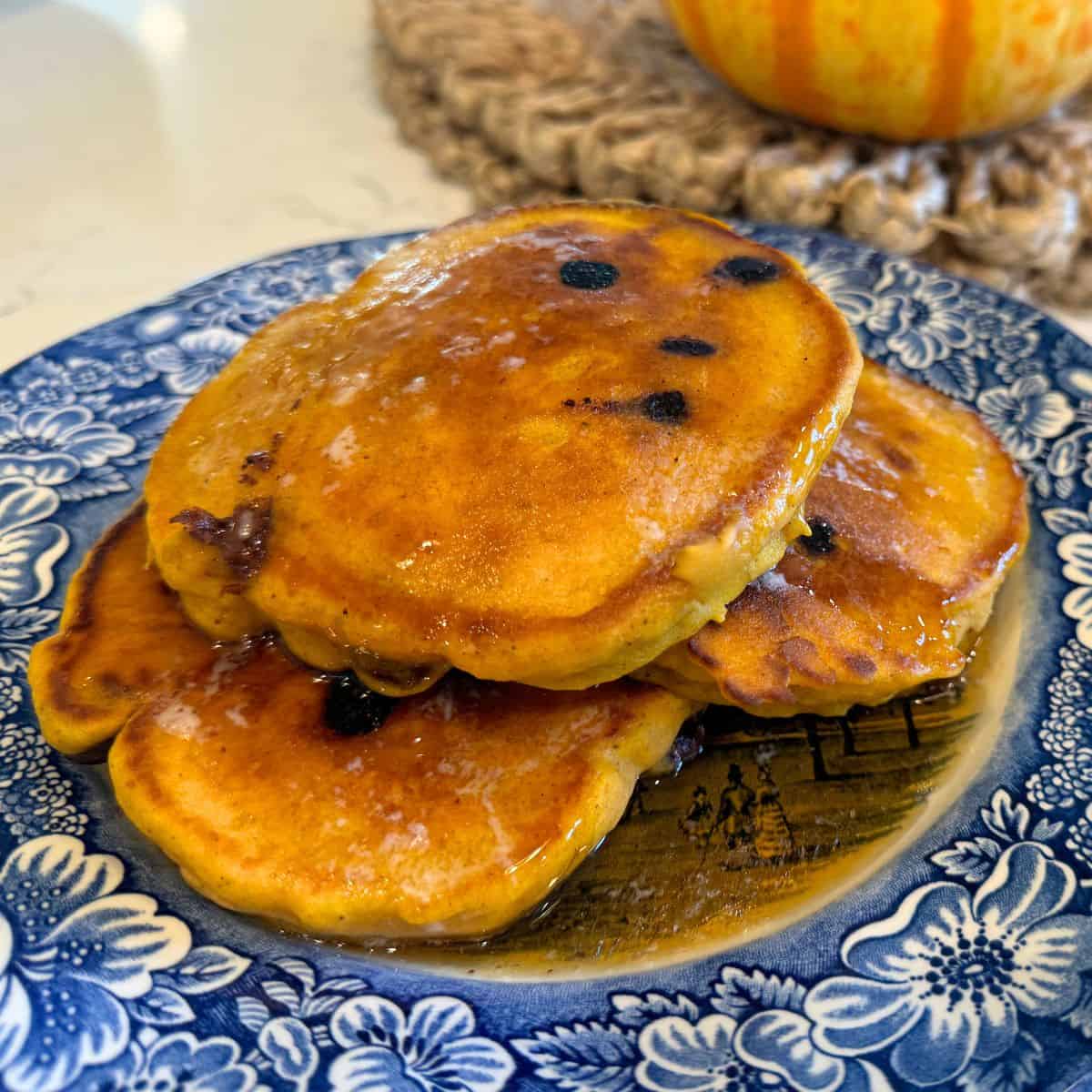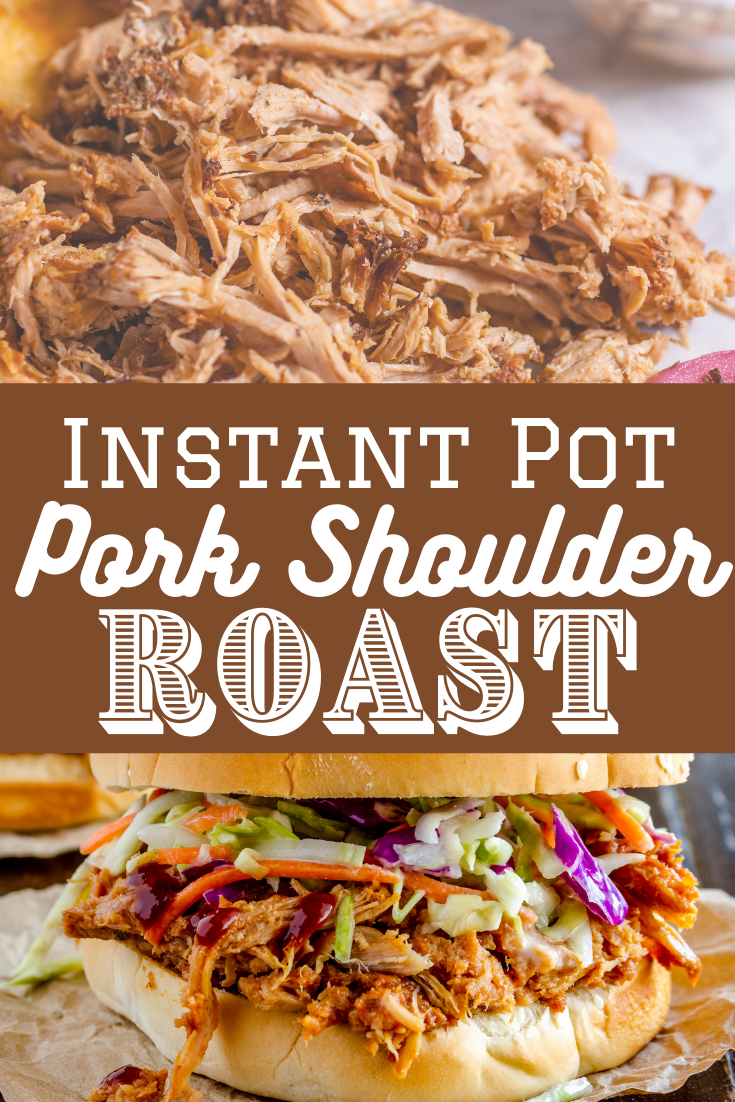These easy sourdough English muffins are light and fluffy, crispy outside, and full of nooks and crannies, with a delicious sourdough depth of flavor that you just can’t get any other way!

Sourdough English Muffins
Mix ingredients the night before, and wake up to a beautifully fermented sourdough that’s ready to make “nook and cranny” perfection!
Serve for breakfast with eggs and cheese as sandwiches or honey butter, use as bread for lunch sandwiches, or as a dinner side (instead of rolls!)

Key Ingredients
- All purpose or fresh ground flour
- Warm water (or milk)
- Active sourdough starter
- Honey, maple syrup or sugar
- Salt
- Corn meal for sprinkling
- Avocado or coconut oil
How To Make Sourdough English Muffins
Start your English muffins the night before you want sourdough English muffins! These sourdough English muffins need to be cooked over very low heat, and covered, for best results. Cooking them this way allows the inside to cook evenly, and the outside to cook to golden brown at the right time.
Instructions
In a large glass bowl add 2 and 1/2 cups of flour, 1 cup of warm water or milk, and 1/2 cup of FED and bubbly sourdough starter, salt and honey then stir till well incorporated.
Cover bowl and mixture with a towel, and let it sit on the counter at room temperature for about 12 hours. (it takes a bit longer in the winter and it ferments faster when it’s nice and warm in the summer.)
In the morning (or after it’s fermented)
In the morning, knead dough slightly and roll out to one inch thick. It works best for me to use my hands for this part, because the dough is a bit thick. (TIP: If your dough is a little soft, add a couple tablespoons of flour till it is workable BUT NOT STIFF.
Then, cut your dough into 12 english muffins.
* Optional: Sprinkle both sides with cornmeal.
Cover raw english muffins and let them rise in a warm spot for an hour.
Then, preheat a skillet on low heat, and add a table spoon of avocado or coconut oil.
Place each portion of dough onto your preheated skillet leaving about an inch or 1 1/2 inch of space between them.
Then, COVER the skillet and cook for 3-5 minutes until they’re golden brown on the bottom, and fluffed up to double in size.
Carefully flip english muffins one at a time. Do NOT try to flip your english muffins till they come of the pan easily.
Cook on second side on low till golden brown! internal temperature is about 200 degrees on an instant read thermometer when they are done!
TIPS
If your English muffins turn out flatter, they needed a couple more tablespoons of more flour.
If you are using a cast-iron skillet, English muffins often cook on the outside before the inside is completely done. To prevent this from happening, keep the heat nice and LOW.
If your English muffins are browned on the outside, but not fully cooked inside, just pop them in the oven at 300-degrees for about 10 minutes!

More Recipes!
How to make a sourdough starter from scratch.
Our favorite sourdough pancakes.
Buttery soft sourdough dinner rolls!
Easy Sourdough Bread Recipe for Beginners
How To Store Leftover Sourdough English Muffins
Store in an airtight container on the counter for up to 5 days, or freeze in an air-tight container for up to 3 months!
Recipe Card

Sourdough English Muffins
Ingredients
- 2 1/2 cups all purpose or fresh ground flour
- 1 cup of warm water or milk
- 1/2 cup fed and active sourdough starter
- 1 tablespoon honey maple syrup or sugar
- One teaspoon salt
- 1/4 cup corn meal for sprinkling
- avocado or coconut oil
Instructions
- In a large glass bowl add 2 and 1/2 cups of flour, 1 cup of warm water or milk, and 1/2 cup of FED and bubbly sourdough starter, salt and honey then stir till well incorporated.
- Cover bowl and mixture with a towel, and let it sit on the counter at room temperature for about 12 hours. (it takes a bit longer in the winter and it ferments faster when it's nice and warm in the summer.)
- In the morning (or after it's fermented)
- In the morning, knead dough slightly and roll out to one inch thick. It works best for me to use my hands for this part, because the dough is a bit thick. (TIP: If your dough is a little soft, add a couple tablespoons of flour till it is workable BUT NOT STIFF.
- Then, cut your dough into 12 english muffins.
- * Optional: Sprinkle both sides with cornmeal.
- Cover raw english muffins and let them rise in a warm spot for an hour.
- Then, preheat a skillet on low heat, and add a table spoon of avocado or coconut oil.
- Place each portion of dough onto your preheated skillet leaving about an inch or 1 1/2 inch of space between them.
- Then, COVER the skillet and cook for 3-5 minutes until they're golden brown on the bottom, and fluffed up to double in size.
- Carefully flip english muffins one at a time. Do NOT try to flip your english muffins till they come of the pan easily.
- Cook on second side on low till golden brown! internal temperature is about 200 degrees on an instant read thermometer when they are done!
Notes
- If your English muffins turn out flatter, they needed a couple more tablespoons of more flour.
- If you are using a cast-iron skillet, English muffins often cook on the outside before the inside is completely done. To prevent this from happening, keep the heat nice and LOW.
- If your English muffins are browned on the outside, but not fully cooked inside, just pop them in the oven at 300-degrees for about 10 minutes!
Sourdough Recipes

About Juliea
Juliea Huffaker is the creator of Farmhouse Harvest, and dedicated to teaching from-scratch cooking, sourdough baking, gardening, and food preservation. With over 25 years of hands-on experience she has preserved hundreds of jars of produce, mastered the art of meats and sourdough baking, and nurtured a thriving organic garden. Her recipes and articles have been featured across the web. And she’s passionate about inspiring others to embrace a simpler, self-sufficient life style.








5 comments
Eveline Kenway
I added milk to mine is it safe to leave on the counter for 12 hours or more.
Juliea Huffaker
I have never had any problem leaving sourdough with milk or eggs in them on the counter for 12 hours…. Im sure there is a potential for bacteria growth, but I have never had a problem. I think the sourdough may be part of that, and cooking it.
Kabrina
This recipe was so good! I made these for my sister and she can’t have dairy so I like that you can add water instead of milk. Also I didn’t end up cooking them after the 12 hours because I didn’t have time so they sat out on the counter for most of the day and then went into the fridge and then I made them the next morning! Still amazing!!!
Thanks!
Marian
I just made these. I used the AP flour and added 1/2 cup of Einkorn fresh milled flour that I bought. I used an electric skillet – preheated to 350 and then down to 325 with muffins. I only had a 2″ cutter so small but they puffed up nicely! I found that 5 minutes each side, covered with a aluminum foil pan, with avocado spray oil was perfect! (coconut oil smoked too much for me). These were delicious, easy and perfect! Thank you!
Gina
I am SO EXCITED to stumble across your website! As a new homesteader, and stay-at-home-mom, I am learning so many new “tricks” of how to make my own food. But the learning curve is steep if you don’t have these blessings of knowledge passed down from generation to generation. Thank goodness for modern tech (in this case) so that I can learn from you! The next best thing would be to sell my house and live next door so I can learn ALL THE THINGS! :0) Thank you SO much for sharing you wisdom and wonderful recipes! I cannot wait to try them all!